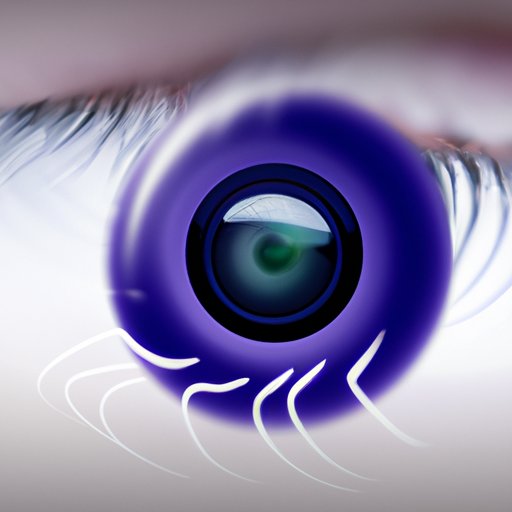Introduction
Blinking is a natural phenomenon that occurs thousands of times a day without most of us ever giving it much thought. However, blinking plays a crucial role in keeping our eyes healthy. By blinking, we moisten our corneas, remove dust particles, and protect our eyes from external irritants.
This article delves deep into the science, evolution, and cultural perceptions of blinking. It aims to help readers understand why we blink, the benefits of conscious blinking, and how they can use this knowledge to improve their eye health.
A Scientific Approach
To understand why we blink, we must first understand the mechanisms of the human eye and the brain. When light enters the eye, it is focused on the retina, a photosensitive tissue at the back of the eye that sends signals to the brain via the optic nerve. The brain then interprets these signals as visual images.
The muscles attached to our eyelids play a vital role in eye movement and blinking. They control the opening and closing of the eyelids and ensure that the eyes remain moist and protected.
So why do humans blink? There are several reasons. One is to keep our eyes moist and lubricated. The moisture helps protect the cornea, which is the transparent outer layer of the eye that refracts light towards the retina.
Another reason is to remove dust particles and other debris from the surface of the eye. Blinking helps sweep away the debris and prevent it from entering the eye.
But what happens if we don’t blink enough or correctly? Lack of blinking can lead to dry eyes, which can cause redness, itching, and irritation. It can also cause eye strain, blurred vision, and sensitivity to light. Therefore, blinking helps protect and maintain healthy eyes.
An Evolutionary Perspective
From an evolutionary perspective, blinking is believed to have helped humans survive. Blinking is an involuntary response to a range of stimuli, including bright light, wind, and foreign objects. It is part of the protective reflex that helps us avoid danger and keep our eyes healthy.
Studies have shown that blink rates vary across different species. Humans tend to blink at a rate of 15 to 20 times per minute on average, while certain animals like cats and rabbits blink much less frequently. This difference is believed to be due to the differences in eye physiology and environment.
Our blink rate has also changed over time. In the past, blink rates were lower, and people blinked less. However, with the rise of technology and screen use, people are blinking more often to keep their eyes moist.
A Cultural Look
Blinking is also culturally significant. Some cultures view blinking as a sign of distrust or dishonesty. For instance, in Japan, excessive blinking is considered impolite and insincere, whereas in certain parts of Africa, prolonged eye contact and blinking are seen as signs of respect and trustworthiness.
On the other hand, cultures like India and many Asian countries consider eye contact and direct blinking as a sign of aggression. These cultural differences can influence how we perceive and interpret the actions of others.
A Practical Guide
Now that we understand the science, evolution and cultural perceptions of eye blinking let’s explore how we can use this knowledge to improve our eye health.
One of the easiest ways to reduce eye strain is to blink consciously and more often. Taking regular breaks from screens and other visually demanding activities can also help reduce eye strain. Using eye drops can also help keep the eyes moist and reduce discomfort.
It is essential to seek professional advice if you experience persistent eye strain or discomfort. Eye exams can help identify any underlying eye problems and provide a plan to improve eye health.
A Personal Account
I was not aware of my blinking habits until I started experiencing frequent headaches and eye strain. My optometrist told me that I was not blinking enough, causing my eyes to dry and leading to fatigue. After becoming more mindful of my blinking and taking regular breaks from my computer screen, my eye health improved.
Conclusion
Blinking is a natural reflex that is essential for protecting and maintaining healthy eyes. It helps keep the eyes moist, protects from external irritants, and reduces eye strain. Understanding the science, evolution, and cultural perceptions of blinking can help us improve our eye health and become more mindful of our blinking habits. By taking care of our eyes and seeking professional help when needed, we can maintain healthy eyesight for years to come.
